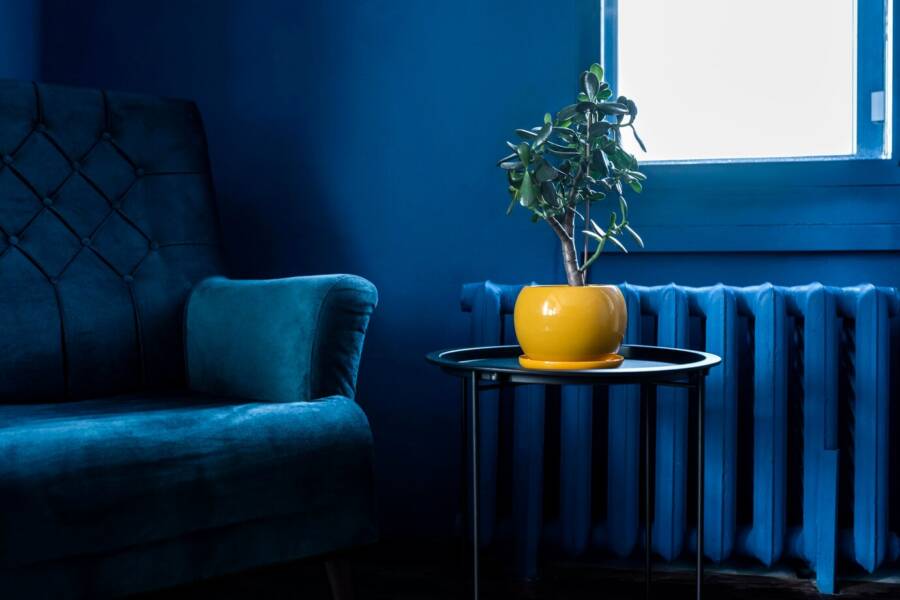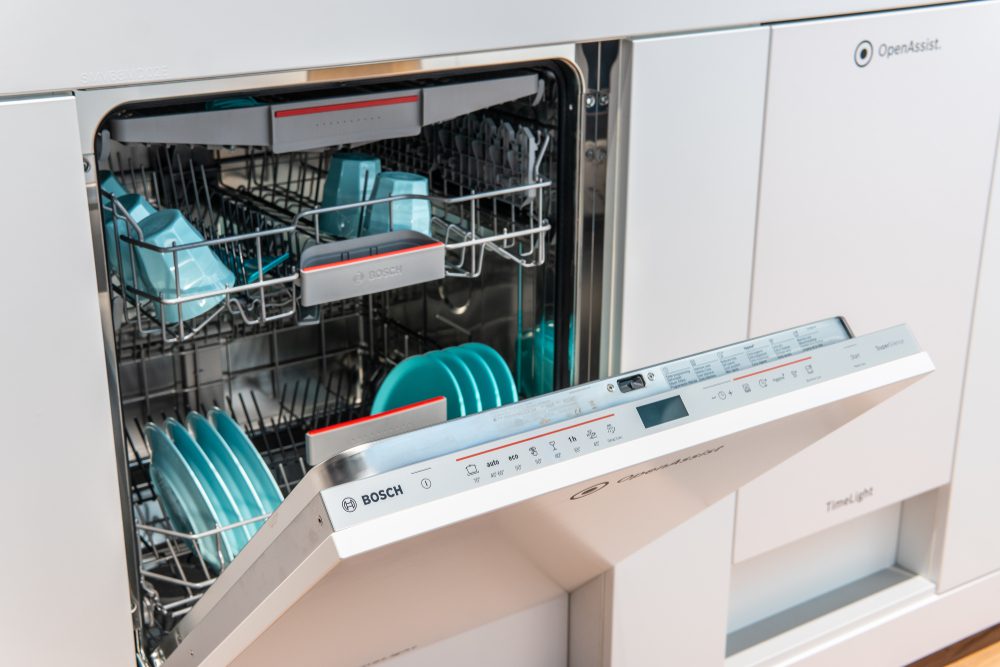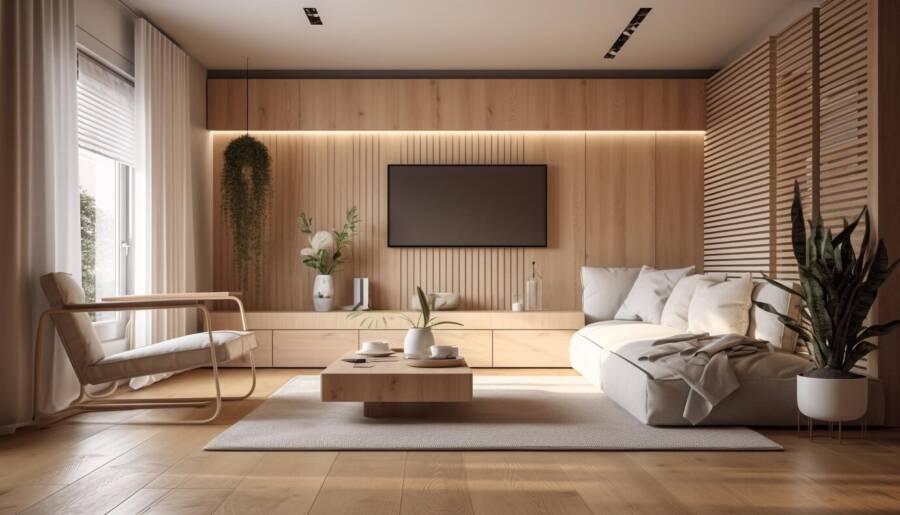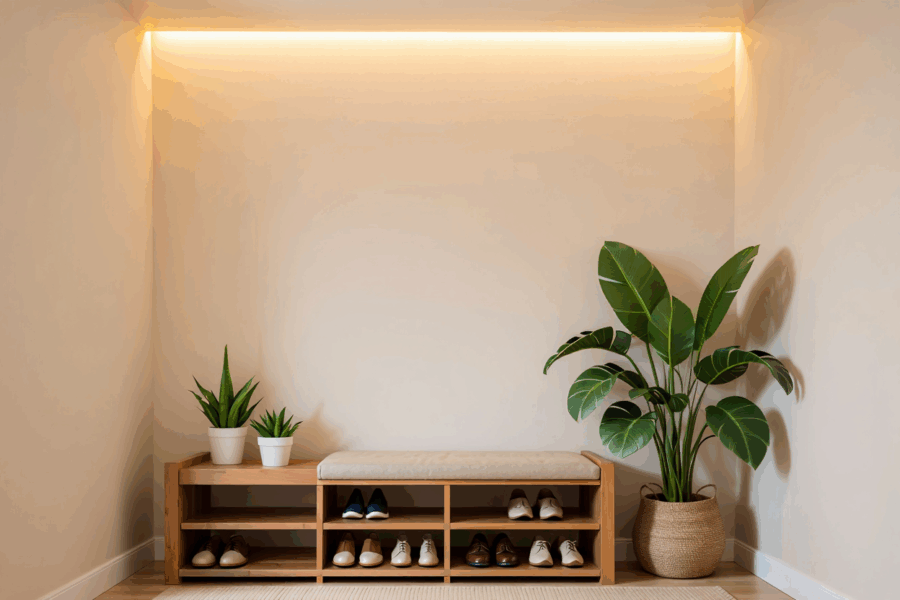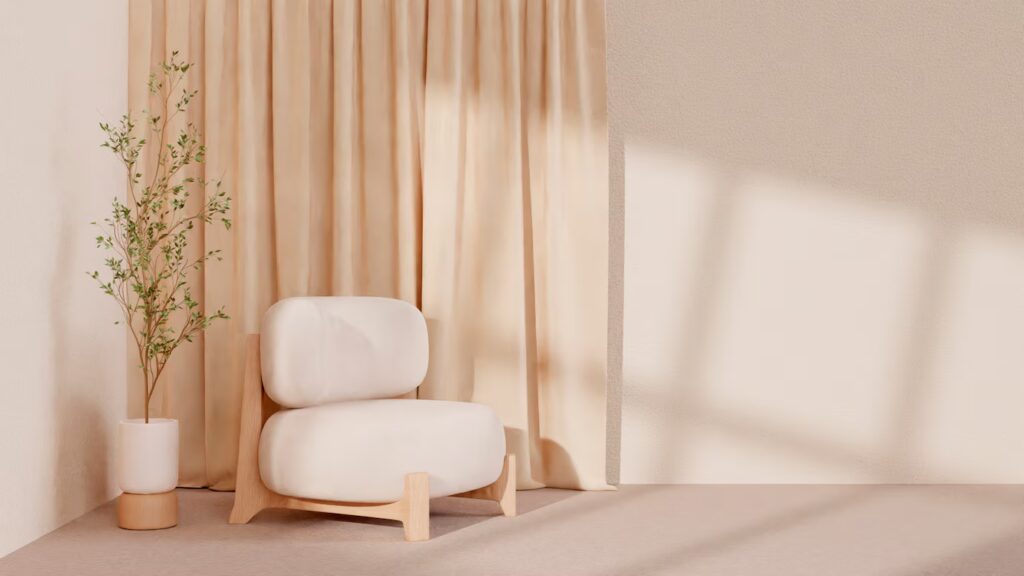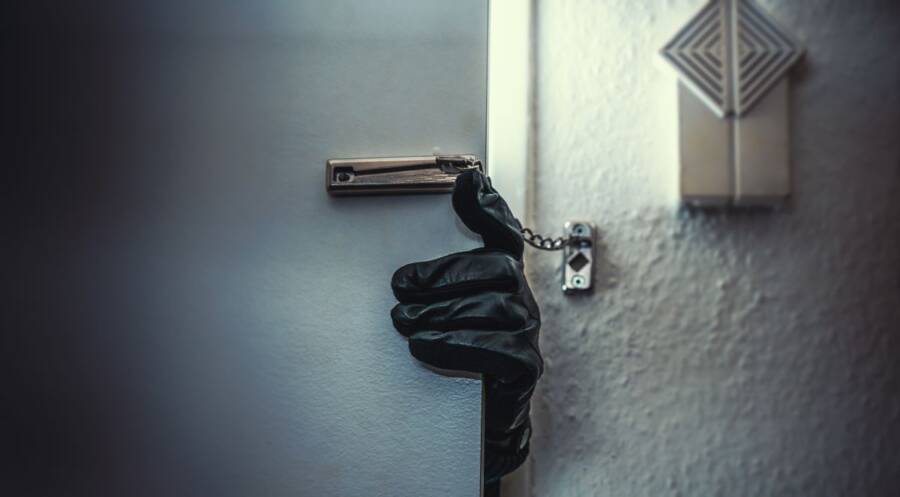Which are some of the best low-light plants?
Anyone who has killed an indoor plant can admit that keeping plants alive isn’t exactly an easy task. If you’re more of a plant killer, you’ll agree with this one. We’re not hers to judge, by the way. Some of us here are awful with houseplants, which is why we love low-light indoor plants.
If you want to infuse your interior with plants, but your space doesn’t receive enough sunlight, you’re in the right place! Many houseplants don’t need sun (most of them need sunlight to stay happy and healthy, but this lineup can survive with less than most and even crave dark corners).
Without further ado, here are some of the best low-light plants that are great for those shady spots!
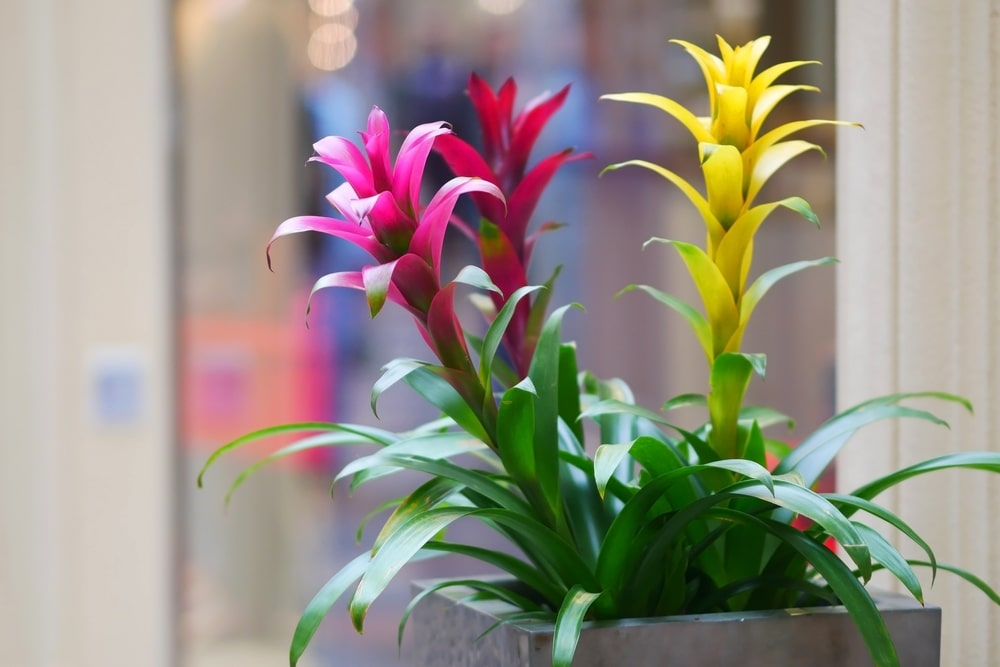
1. Bromeliads
If you’re looking for a tropical vibe or to incorporate some subtle olor into your house, look no further than the bromeliad. Humid environment? No problem. Fluorescent light? Bring it on!
Channeling the tropical plants’ good looks with their distinct shapes, varying sizes, and stunning colors, bromeliads are some of the loveliest low-light plants. This is the kind of plant that will always steal the show when in bloom.
Since it thrives in low-light conditions, you should keep it out of the afternoon sun to avoid scorching the leaves. When watering your bromeliad, make sure you fill the center “cup” formed by the first row of leaves and let the plant absorb the moisture.
2. Peacock plant
Extremely hardy with its large, deep green leaves that have striking yellow stripes and a purple underside, the peacock plant definitely earns its name. Beautiful and bold, this is one of the low-light plants that are a real showstopper.
With its lush foliage, the peacock plant is perfect for filling empty spots in your house or office. While it prefers bright, filtered light, it can also tolerate a dark corner.
When watering your peacock plant, make sure you check the soil before adding moisture, as these houseplants prefer their soil to be moist but not soggy. And, most importantly, avoid placing it in direct sunlight, as this might scorch its leaves.
3. Snake plant
Snake plant isn’t just one of the most popular houseplants, but also one of the best low-light plants that thrive in a shady spot. Also known as “mother in law’s tongue,” the snake plant is one of the hardiest indoor plants, and it doesn’t need much care to look great.
It can grow up to three feet long and one foot wide, delivering a dramatic statement in any environment. It tolerates neglectful watering schedules and can even pull it off in artificial light.
In other words, if you’re looking for a houseplant that will thrive on being forgotten about, the snake plant is exactly what you need.
Never water your snake plant until the soil is fully dry to the touch. Give it a good soak and allow the excess water to drain away.
4. Dragon tree
With its bright green color, the dragon tee is an eye-catching, spiky tree known for being a great entry plant for household gardeners. As one of the most charming low-light plants, the dragon tree is drought-tolerant, easy to care for, and nearly indestructible.
Large plants can grow to around 20 feet in warm outdoor climates. However, indoors, it is usually grown as a potted plant and kept pruned to 6 feet or less.
The dragon tree is perfect as a floor decor plant, and it grows best in bright light, though it can also survive in partial shade. Too much sun can damage its bright green leaves, so make sure you choose a spot for it that doesn’t get too much sunlight.
Read on to discover other low-light plants!
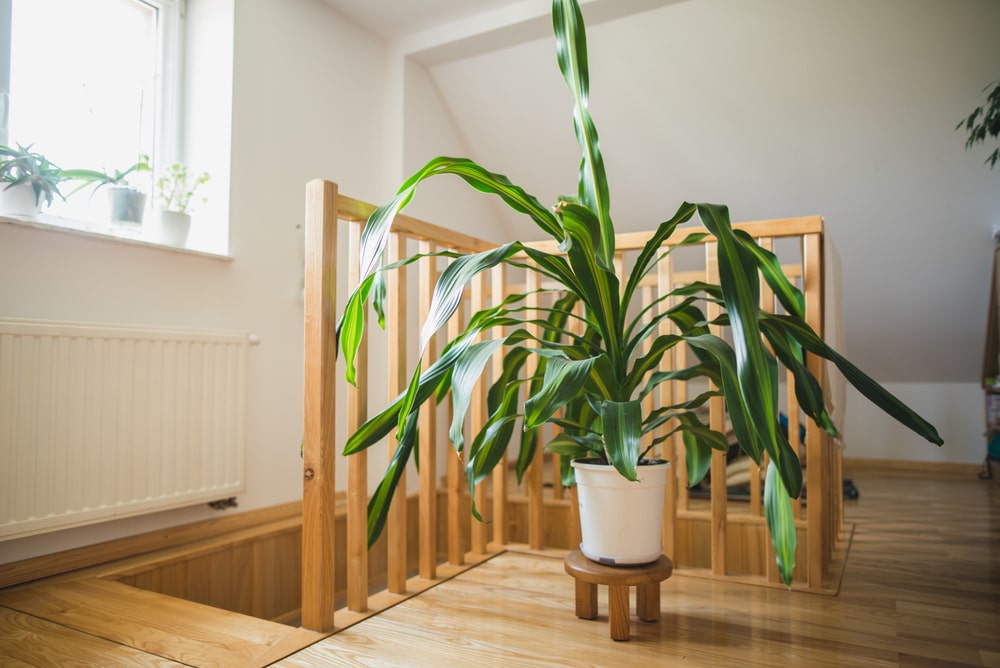
5. Corn plant
The corn plant, also known as the Dracaena corn plant, is an imposing houseplant with attractive foliage. Like all dracaenas, it’s a very forgiving plant and is tolerant of missed watering, lower light, and general neglect.
When small, the corn plant can sit on a table, but its real glory is that it grows to be an astonishing 6–10-foot tree. While it can tolerate bright indirect light, it’s one of the low-light plants that does best in shaded spots.
Before you water your corn plant, make sure the top inch of soil is dry. Yellowing leaves are a sign that the plant has been overwatered, so adjust accordingly.
By the way, if you need a new plant pot, here are some affordable options to choose from.
6. Pothos
If you’re looking for a plant to adorn your living room shelves, pothos is the best choice! This fast-growing vine is perfect for hanging baskets or trailing over bookcases and shelves.
With many varieties featuring different shades of green foliage (the one with light green speckled leaves is the most popular), pothos plants are almost impossible to kill. As a hardy plant, it’s one of the least demanding low-light plants to tend.
It can tolerate a wide range of growing environments. While it thrives in bright, indirect light, the pothos plant can also tolerate medium light or low indirect light if needed. Don’t keep in intense, direct light under any circumstances, as the sunlight will burn and brown its leaves.
7. Dumb cane
A fan favorite, the dumb cane plant is a popular houseplant that does well in bright, indirect sunlight. It just needs some standard potting soil, humidity, and average home temperatures.
The dumb cane has lush, dark green foliage of big, bold leaves variegated in greens and cream colors. The plant can grow up to 5 feet tall. It’s important to know that these low-light plants are sensitive to drafts, so you should keep yours away from doors, windows, and vents. They also prefer to be kept on the drier side, so allow the top layer of soil to dry out in between waterings.
8. Arrowhead plant
Moving forward with the list of the best low-light plants, we have the arrowhead vine. Tropical in nature, this houseplant is a lovely climbing or trailing vine that can grow quickly if given the conditions it needs.
Hailing from various parts of South America, the arrowhead plant has become a well-liked indoor plant due to its hanging shape and easy-going nature.
Similar to other low-light plants, this one likes bright, indirect light but not direct sunlight. Diffused light is best since harsh rays can bleach or burn its delicate vines and leaves. Variegated colorways can do a bit better in more direct sun, but the dark green varieties are better when kept in dark corners.
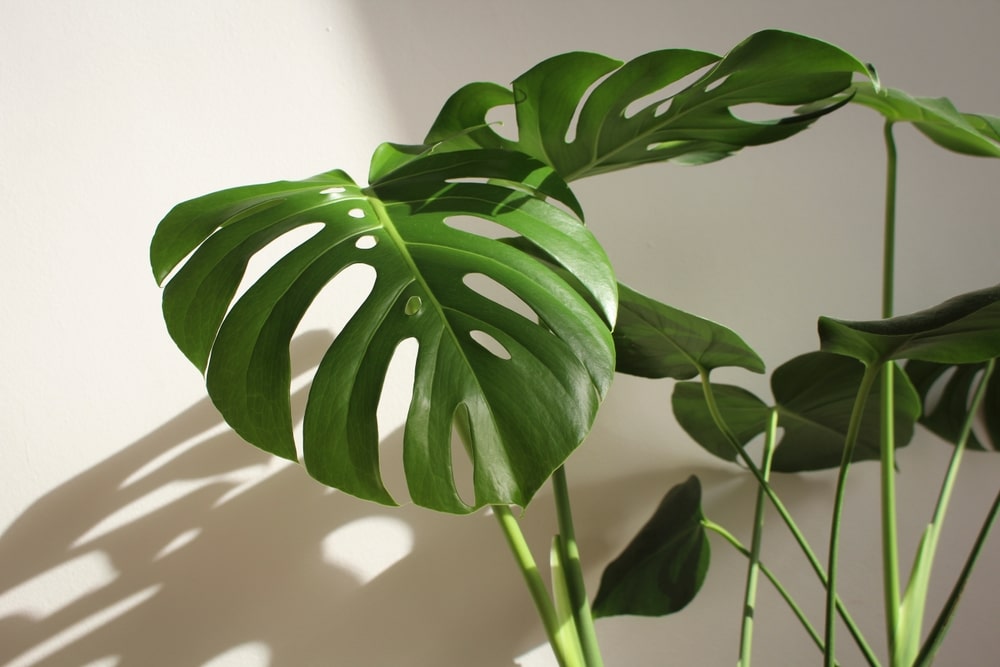
9. Swiss cheese plant
This is a unique and gorgeous houseplant, perfect for those who adore a bit of quirkiness in their indoor decor. This tropical plant gets its name from the huge, perforated leaves that resemble Swiss cheese. While it has tropical origins, this plant doesn’t like direct sunlight but rather thrives in a room with little natural light.
To care for your Swiss cheese plant, make sure the soil is slightly moist but not waterlogged. This indoor plant prefers high humidity compared to other low-light plants, so you should mist the leaves regularly. Another option would be to place the plant on a tray of wet pebbles. This will help increase humidity around the plant.
Another thing you should do is fertilize it every two weeks during the growing season. With a little attention and love, your Swiss cheese plant will thrive and add a tropical vibe to your house.
10. Cast iron plant
There are many low-light plants to choose from, but if you want something bold, the cast iron plant is exactly what you need! Known for its ability to thrive in dimly lit places, this plant is perfect for rooms with little natural light.
The cast iron plant can grow up to 3 feet tall and live for a bunch of years with proper care. Make sure you keep the soil consistently moist but not waterlogged. Also, avoid placing the houseplant in an area that gets cold drafts.
Cast iron plants also do well in slightly acidic soil, so you can add a bit of vinegar to the water when you water them.
If you liked our article on low-light plants, you may also want to read 10 Small Trees That Will Make Your Landscape More Beautiful.

